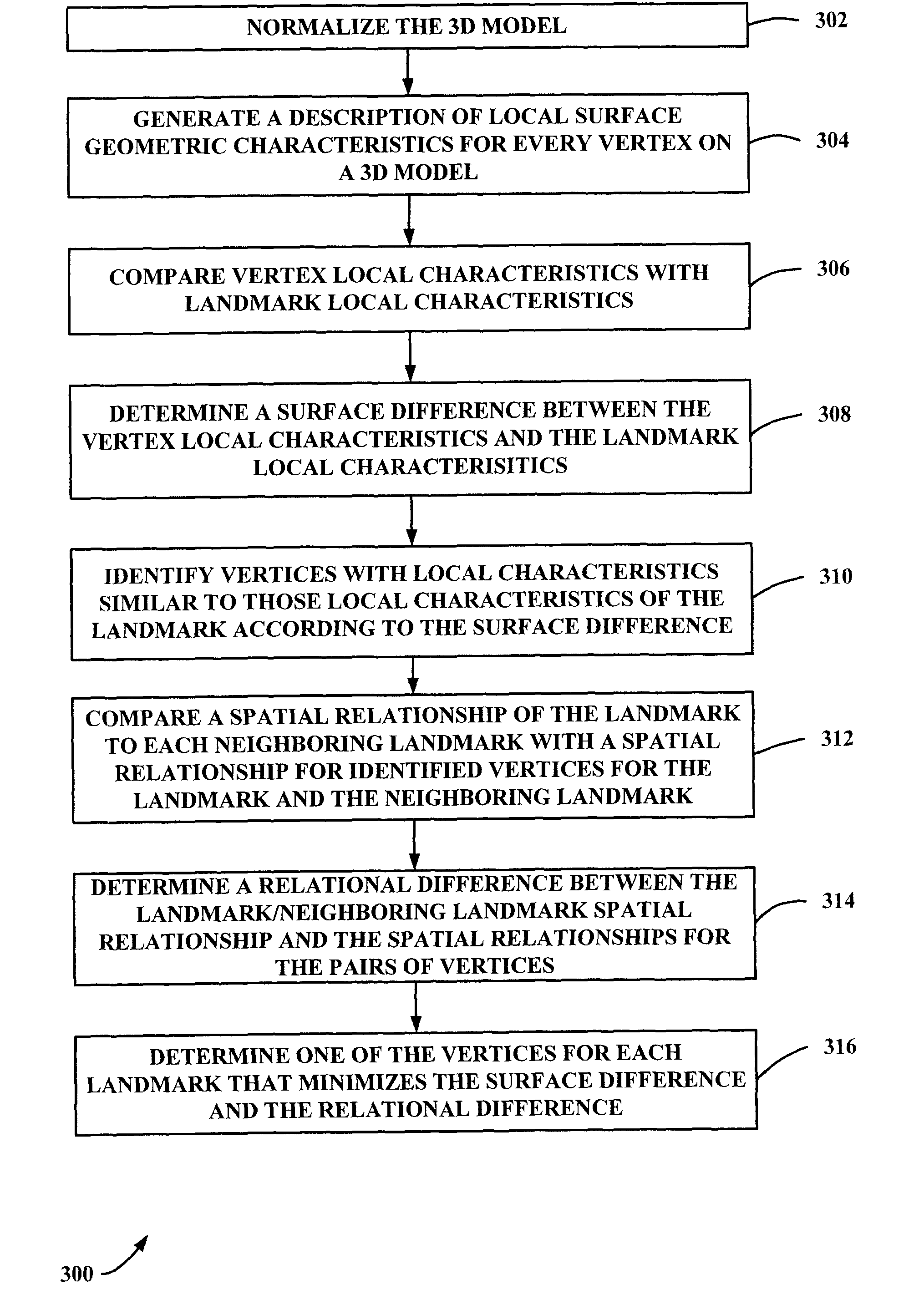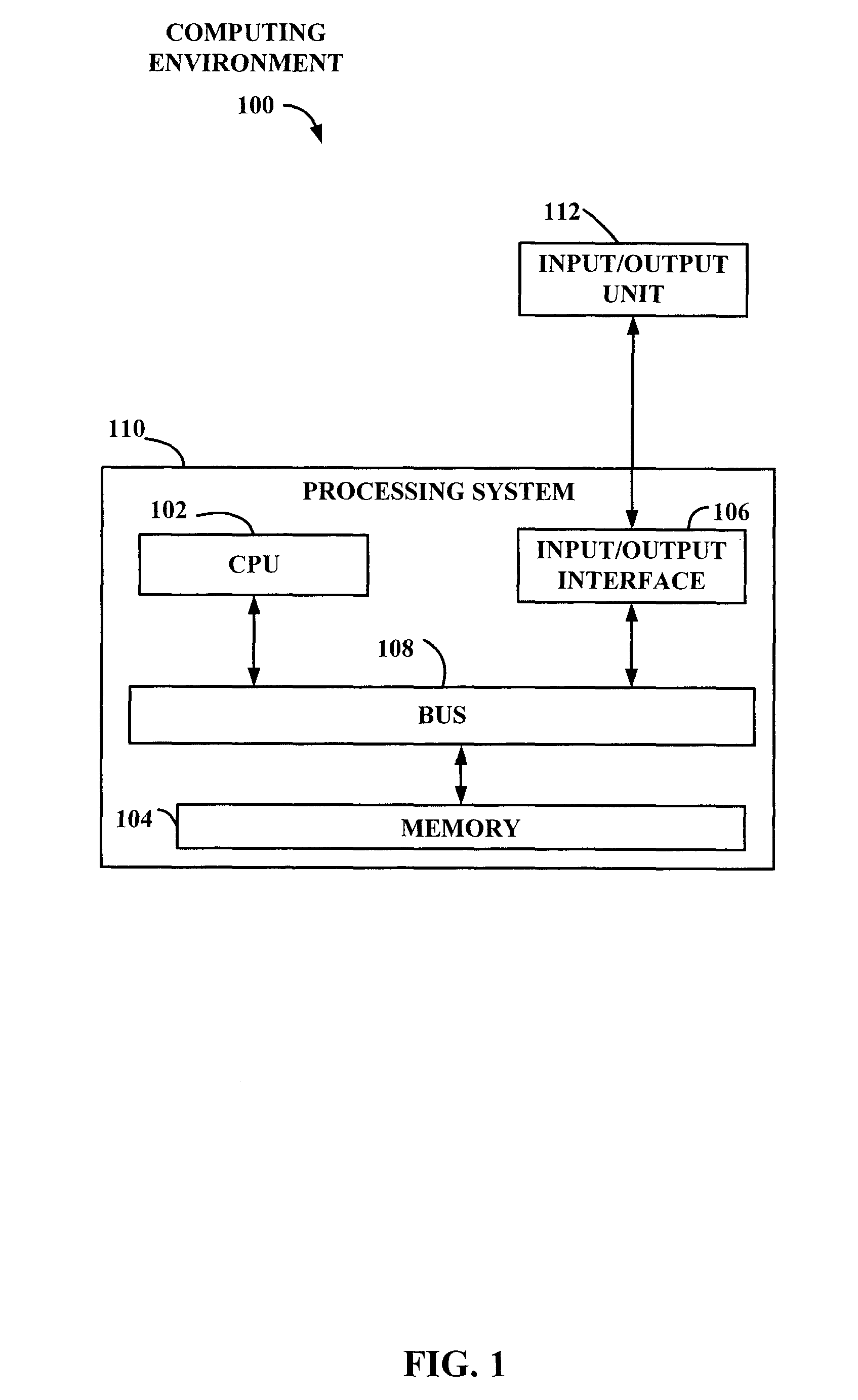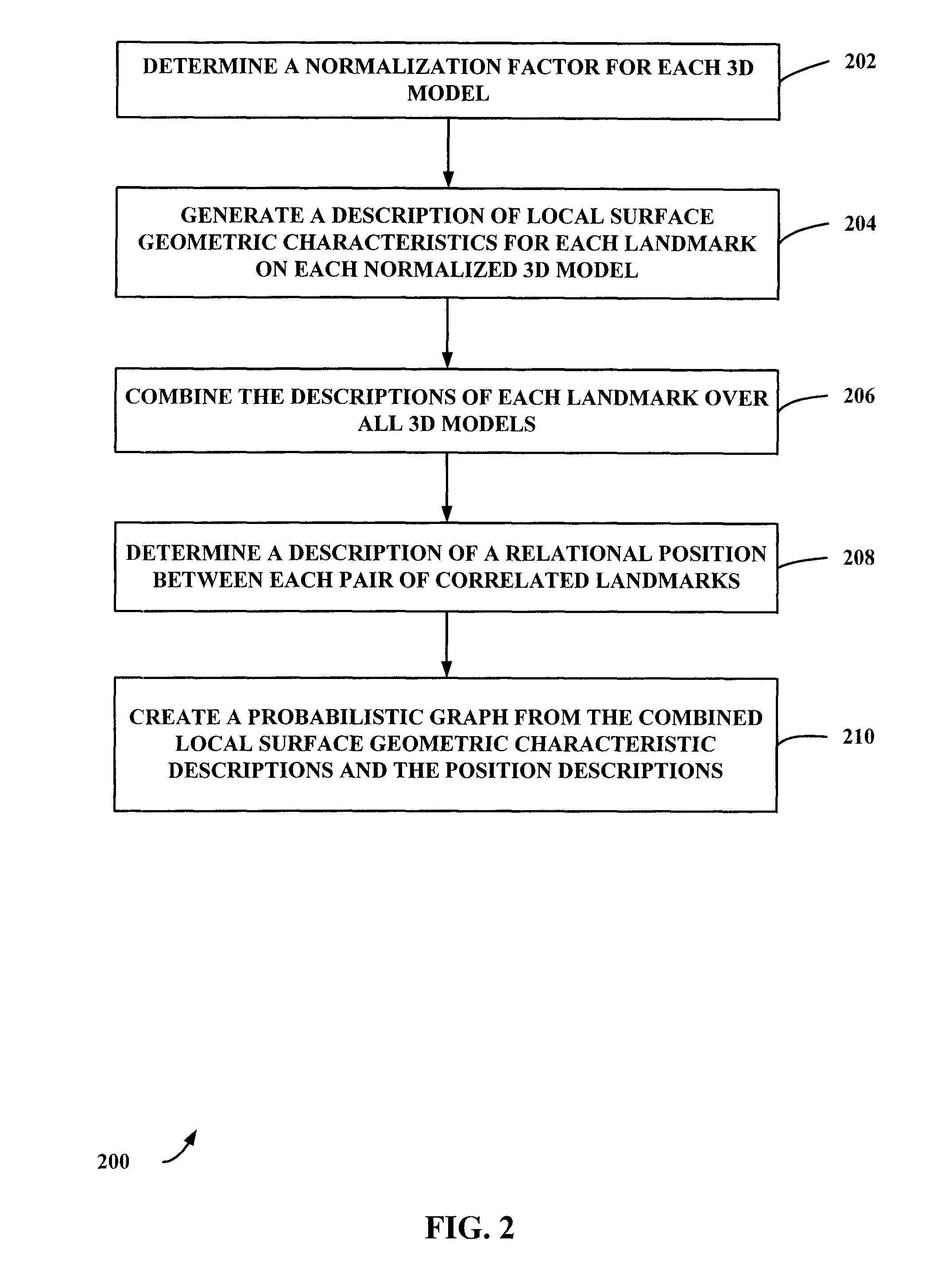Method and system for locating landmarks on 3D models
a landmark and 3d model technology, applied in the field of landmark and 3d model locating, can solve the problems of complex processing and comparing the 3d models produced by imaging devices, difficult object object comparison, and requiring 30 minutes for each human body
- Summary
- Abstract
- Description
- Claims
- Application Information
AI Technical Summary
Benefits of technology
Problems solved by technology
Method used
Image
Examples
Embodiment Construction
[0020]The following detailed description of the embodiments does not limit the implementation of the embodiments to any particular computer programming language. The computer program product may be implemented in any computer programming language provided that the operating system provides the facilities that support the requirements of the computer program product. An embodiment may be implemented in the C or C++ computer programming language (or may be implemented in other computer programming languages in conjunction with C / C++) or any other such language. Any limitations presented would be a result of a particular type of operating system, computer programming language, or processing system and would not be a limitation of the embodiments described herein.
[0021]FIG. 1 illustrates a configuration of a computing environment 100 comprising a processing system 110 in which an embodiment of a system for locating landmarks in a 3D model may be implemented.
[0022]The processing system 1...
PUM
 Login to View More
Login to View More Abstract
Description
Claims
Application Information
 Login to View More
Login to View More - R&D
- Intellectual Property
- Life Sciences
- Materials
- Tech Scout
- Unparalleled Data Quality
- Higher Quality Content
- 60% Fewer Hallucinations
Browse by: Latest US Patents, China's latest patents, Technical Efficacy Thesaurus, Application Domain, Technology Topic, Popular Technical Reports.
© 2025 PatSnap. All rights reserved.Legal|Privacy policy|Modern Slavery Act Transparency Statement|Sitemap|About US| Contact US: help@patsnap.com



